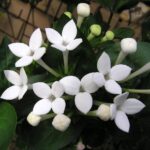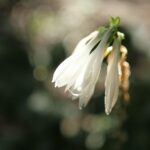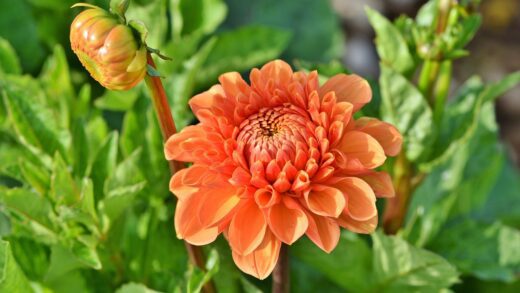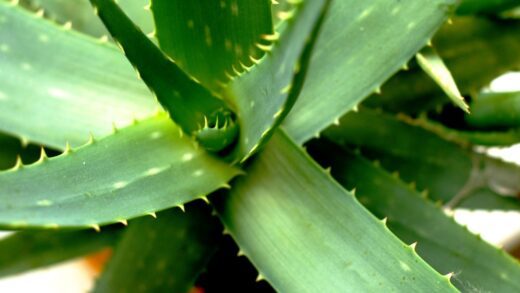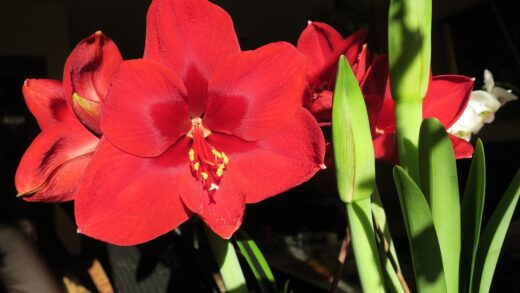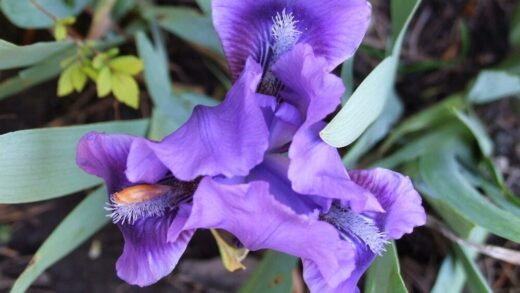The nutrient requirements of biting stonecrop are exceptionally low, a trait that directly reflects its native habitat of rocky crevices, sandy soils, and nutrient-poor ground. This is a plant that is truly adapted to thrive on neglect, and its fertilization needs are minimal to non-existent in most garden settings. In fact, applying fertilizer, especially nitrogen-rich formulas, is one of the most common mistakes in its cultivation. Rich soil and supplemental feeding can lead to weak, leggy, and floppy growth that is more susceptible to pests, diseases, and winter damage, while detracting from the plant’s desirable dense, compact form.
Biting stonecrop has evolved to grow in lean conditions, and providing it with an overly fertile environment disrupts its natural growth habit. The plant is forced into producing lush, soft foliage at a rapid rate, which it is not equipped to support structurally. This results in elongated stems that are unable to hold themselves upright, creating a sparse and untidy appearance rather than the tight, carpet-like mat that is so highly valued. This weak growth is also more attractive to pests like aphids and is more prone to rot.
In the vast majority of garden soils, even those considered poor by general standards, there are sufficient nutrients to support healthy biting stonecrop growth. The slow decomposition of organic matter in the soil, such as fallen leaves, provides a steady, gentle supply of the nutrients the plant needs. Therefore, for plants grown in the ground, a “no-fertilizer” approach is the best and most effective strategy for maintaining their health and aesthetic appeal.
The only potential exception to this rule is for plants grown in containers for many years. Over time, the nutrients in the potting mix can become depleted through watering. Even in this scenario, any fertilization should be extremely light and infrequent. This article will explore the plant’s preference for lean soil, discuss when and how to fertilize if absolutely necessary, and highlight organic alternatives that support soil health without overwhelming this minimalist succulent.
The minimalist approach to fertilization
Adopting a minimalist philosophy is the cornerstone of properly managing the nutrient needs of biting stonecrop. This plant is a prime example of how “less is more” in gardening. Its entire growth strategy is built around surviving and thriving in environments where nutrients are scarce. Attempting to “improve” its conditions with fertilizers often backfires, leading to a host of problems that are entirely avoidable. The goal should be to replicate its natural, lean growing conditions, not to transform them into a rich, fertile bed.
For biting stonecrop planted in garden beds, rockeries, or as ground cover, the best practice is to provide no supplemental fertilizer at all. The trace minerals and nutrients present in average to poor garden soil are perfectly adequate to sustain its growth and flowering. The plant is highly efficient at extracting what it needs from the soil, and adding more can upset this delicate balance. Let the natural cycles of the garden ecosystem provide for the plant.
This hands-off approach not only benefits the plant but also simplifies the gardener’s tasks. There is no need to purchase special fertilizers, remember a feeding schedule, or worry about application rates. This makes biting stonecrop an exceptionally low-maintenance and cost-effective choice for various landscaping applications. By simply leaving it alone, you are providing it with the exact conditions it needs to flourish and maintain its resilient character and attractive appearance.
Embracing this minimalist strategy requires a shift in the traditional gardening mindset, which often equates feeding with caring. For biting stonecrop, the greatest act of care is to refrain from providing excess nutrients. This respect for the plant’s natural adaptations will be rewarded with a healthy, compact, and beautiful ground cover that performs reliably year after year with virtually no input from the gardener.
Ideal soil fertility and nutrient profile
The ideal soil for biting stonecrop is one that is low in organic matter and nutrients, often described as “lean” or “poor.” This type of soil composition closely mirrors the scree, gravel, and shallow soil pockets where the plant naturally grows. A soil rich in compost, manure, or other organic amendments holds too much moisture and contains an excess of nutrients, particularly nitrogen, which is detrimental to the plant’s health and structure.
A nutrient profile that is low in nitrogen (N) but has adequate levels of phosphorus (P) and potassium (K) is optimal. Nitrogen promotes lush, green foliar growth, which is precisely what should be avoided with biting stonecrop. Phosphorus is important for root development and flowering, while potassium contributes to overall plant hardiness and disease resistance. In a lean soil environment, these nutrients are available in balanced, modest amounts that support strong, compact growth rather than weak, excessive foliage.
When preparing a new bed for biting stonecrop, there is no need to incorporate compost or other rich soil conditioners. Instead, the focus should be entirely on improving drainage by adding inorganic materials like sand or grit. If your soil is naturally very fertile, you can even “dilute” it by mixing in a significant amount of sand or fine gravel to reduce its nutrient content and improve its structure. This creates the perfect lean, well-drained medium for the plant.
In essence, the “ideal” soil for this succulent is what many gardeners would discard as poor-quality fill. This makes it an incredibly valuable plant for solving landscaping challenges in difficult areas. It can be used to beautify areas with thin, rocky soil where little else will grow, turning a problem spot into a feature with its vibrant texture and color, all without the need for soil improvement or fertilization.
When and how to fertilize if necessary
While the standard recommendation is to avoid fertilizing biting stonecrop, there are a few specific, limited circumstances where a very light feeding might be considered. The primary scenario is for plants that have been growing in the same container or pot for several years. Over time, the finite amount of nutrients in the potting mix can be completely used up or leached out by repeated watering, potentially leading to a decline in the plant’s vigor.
If you notice that a long-established container plant is showing signs of nutrient deficiency, such as a general yellowing of the entire plant (not just the base, which would indicate rot) and a complete lack of new growth or flowering for a season, a small dose of fertilizer may be warranted. It is crucial to first rule out other potential causes for these symptoms, such as poor lighting, drainage issues, or pest infestations, before resorting to fertilization.
If you decide that fertilization is necessary, it must be done with extreme caution. Choose a balanced liquid fertilizer formulated for cacti and succulents, or a general-purpose fertilizer with a low nitrogen content (the first number in the N-P-K ratio). Dilute the fertilizer to one-quarter or even one-half of the strength recommended on the product label. Applying a full-strength dose would be far too much for the plant to handle.
Apply this highly diluted fertilizer only once in the early spring, just as new growth is beginning. This single, very light application is typically more than enough to replenish the depleted nutrients in the container mix for the entire year. Never fertilize in the late summer or autumn, as this can encourage a flush of new, tender growth that will not have time to harden off before winter and will be susceptible to frost damage.
Organic alternatives and soil amendments
For gardeners who prefer to use organic methods and wish to provide a gentle boost to their container-grown stonecrop without resorting to synthetic fertilizers, there are a couple of very cautious options. One of the best and safest approaches is to top-dress the container with a very thin layer of compost or worm castings once every two or three years in the spring. A mere dusting over the soil surface is sufficient.
When you water the plant, the nutrients from this thin layer of organic matter will slowly and gently leach into the soil, providing a very mild and balanced source of micronutrients. This slow-release method is much less likely to shock the plant or cause the kind of rapid, weak growth associated with liquid fertilizers. It is a subtle way to replenish the potting medium over a long period.
Another organic alternative is to use a very weak compost tea. This is made by steeping a small amount of finished compost in water for a day or two and then using the strained liquid to water the plant. As with liquid fertilizers, this tea should be heavily diluted to a pale, weak-tea color before being applied. This provides a gentle, water-soluble infusion of nutrients and beneficial microbes to the soil.
It is important to reiterate that these organic amendments are generally unnecessary and should only be considered for long-term container plants showing clear signs of deficiency. For ground-planted biting stonecrop, the best soil amendment is not one that adds fertility but one that improves texture and drainage. Adding grit, sand, or crushed stone to the soil is the most beneficial “amendment” you can provide, as it creates the physical soil structure the plant needs to thrive.

